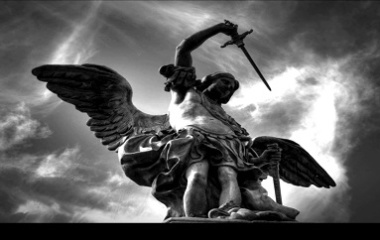- Pronunciation: soul
- Origin: Rome
- Cult Center: Circus Maximus
- Role: Sun god
- Symbols: Sun
Who Is Sol Invictus?
The god of the Unconquered Sun, Sol Invictus, was the official sun god of the later Empire of Rome. The Emperor Aurelian reintroduced the sun god and cult in 274 AD. The Emperor Constantine, also known as Constantine the Great, made the practice of Christianity legal in Rome, but continued to have his coins inscribed with the words, “Sol Invicto Comiti”, which means Committed to the Invincible Sun.
The birthday of the unconquered sun was celebrated at the Roman festival of Dies Natalis Solis Invicti on December 25, and it is often theorized that Constantine had a hand in selecting this day as the celebration date of the birth of Christ as well.
Constantine the Great
“The struggle for deathlessness must be free”, are the words of the Emperor Constantine, who legalized Christianity in ancient Rome. As the story is told, he was preparing for a great battle with Maxentius to gain control of the western portion of the empire, and considering what power to rely on for protection. He could look to the many deities or a single god almighty as presented by Christianity. As he decided to take the Christian route, he claimed to see a radiant cross above the sun that was scripted with the words “In hoc signo vinces”, which means “by this sign conquer”. This was painted on the shields of his army prior to entering the battle. Constantine’s forces prevailed. Maxentius and his army retreated to a bridge across the Tiber River, and Maxentius drowned.
Seemingly, Constantine associated his victory with the power of the sun, and viewed Sol Invictus as very similar to the Christian god. His adoption of Christianity in the Roman Empire was more likely a matter of political strategy than religious conviction.
Historical Influence
There still remain questions concerning the choice of December 25 as the date of Christmas Day. Some people believe the date on which we celebrate the birth of Christ was chosen after the Sol Invictus pagan celebration, while others claim that December 25 was chosen as Christmas Day first. The Romans believed Sol died on December 21, before being reborn three days later on December 25. December 21 and the three days that follow are the shortest – and therefore darkest – days of the year in the Northern Hemisphere.
There are also a number of popular theories that connect the Christian religion to the sun and astrology. One such theory points out that Jesus had 12 disciples, which corresponds neatly with the 12 zodiac constellations. In addition, some people have observed that in many paintings depicting Jesus Christ, his halo closely resembles the cross of the zodiac.











nice work